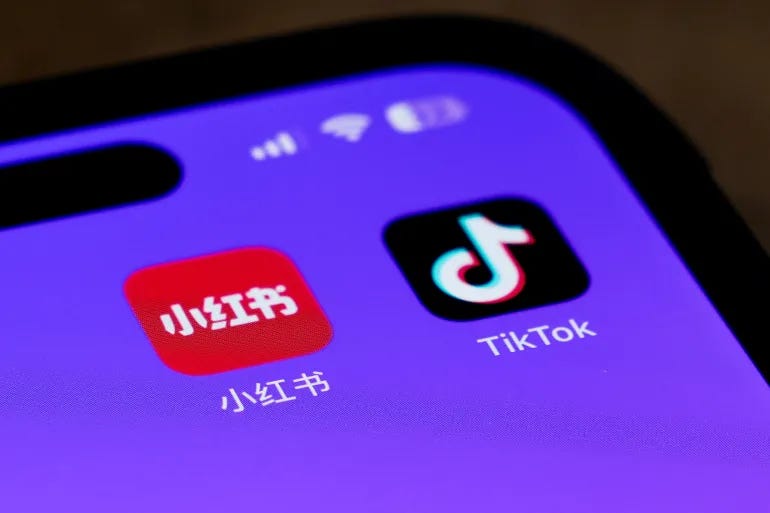TikTok Users in the U.S. Turn to China’s Xiaohongshu as Potential Ban Looms
In response to the impending TikTok ban, Americans are flocking to Xiaohongshu, China’s popular lifestyle app, sparking a wave of cross-cultural exchange.
As the United States prepares to potentially ban TikTok due to national security concerns, a growing number of American users have turned to Xiaohongshu, also known as "RedNote," seeking a similar social media experience. The Chinese platform, often compared to Instagram, has rapidly gained traction among U.S. users, reaching the top spots on both the iOS and Google Play app stores.
Xiaohongshu, a lifestyle platform with a primarily female user base, allows users to share photos, videos, and written posts, and it has garnered approximately 300 million active users. Although smaller in reach compared to major Chinese apps like WeChat and Sina Weibo, Xiaohongshu is now experiencing an influx of American users, many of whom are calling themselves "TikTok refugees."
The move to RedNote comes ahead of the expected ban of TikTok in the U.S. by Sunday, unless the app's parent company, ByteDance, divests its stake in the platform. Another ByteDance-owned app, Lemon8, has also seen a rise in downloads, securing second place in the app store rankings.
The unexpected surge in American users has resulted in a wave of cross-cultural interactions. One user, “Star404,” posted a video expressing surprise at the sudden influx of Americans. “Americans are coming here, so sorry if y’all hate us. I promise we’ll do our best,” she wrote, receiving over 4,000 comments within 24 hours from Chinese users welcoming her to the platform.
Ryan Broderick, an internet culture expert and author of the newsletter Garbage Day, pointed out the irony of American teenagers moving to another Chinese-owned app as a form of protest against the TikTok ban. “It’s definitely funny that American teenagers are protesting the looming TikTok ban by using a much more culturally Chinese app,” he remarked.
Despite the initial excitement, Xiaohongshu’s owner is reportedly feeling the pressure. According to a report from Chinese media outlet PConline, the company has instructed employees not to discuss or promote the rise in U.S. users, aware of the potential risks such traffic poses, including regulatory and political complications.
In contrast to TikTok’s international approach, Xiaohongshu’s content is subject to Chinese censorship laws, and users must adhere to specific guidelines. A post under “Star404’s” video cautioned American users to avoid discussing sensitive topics such as politics, religion, or drugs, and to align with China's One-China policy.
Another challenge for American users will be adapting to Xiaohongshu’s monetization model, which differs significantly from TikTok’s. While creators on TikTok often monetize content through ad revenue or external affiliate links, Xiaohongshu focuses on paid partnerships, particularly in the realm of e-commerce and live-stream shopping—a rapidly growing sector in China.
Experts, including Yiwen Lu from ChinaTalk, suggest that American creators may face difficulties in transitioning their content and income streams to Xiaohongshu in the short term. "Xiaohongshu positions itself as a shopping platform, which makes it harder for creators to replicate their TikTok success," said Lu.
Though many users have joined Xiaohongshu as a form of protest or out of curiosity, there is skepticism about how long the migration will last. Still, Broderick sees it as a reminder to U.S. policymakers and Big Tech. “It’s a funny way to hopefully make U.S. politicians realize that Chinese apps are coming for the U.S., whether they like it or not,” he said.
As the landscape of social media continues to evolve, Xiaohongshu’s sudden rise among American users could signal broader shifts in the digital realm, challenging both U.S. tech giants and government regulators alike.


